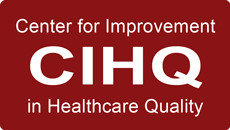 Prista partners with the Idaho Hospital Association to promote ActionCue CI, a platform for healthcare quality-safety and performance improvement.
Prista partners with the Idaho Hospital Association to promote ActionCue CI, a platform for healthcare quality-safety and performance improvement.
[Austin, Texas]
Prista Corporation, an industry leader in clinical intelligence software for healthcare quality-safety and performance improvement, is proud to announce their latest partnership – that of the Idaho Hospital Association.
“Over the past 14 years, Prista has successfully deployed ActionCue Clinical Intelligence to many hospitals in 33 states – including several in Idaho. Gaining this important endorsement from IHA further validates the key role ActionCue CI plays in facilitating continuous performance improvement in patient care and safety by providing actionable insights in real-time to healthcare leaders and their staffs. We look forward to working with IHA members to bring ActionCue CI to bear on solving their challenges,” said Don Jarrell, President of Prista Corporation.
“IHA is pleased to welcome Prista Corporation as a valued Partner,” said Tim Powers, Spokesperson for the Idaho Hospital Association and Executive Director of Healthcare Business Ventures, Inc. Mr. Powers continued, “This partnership recognizes that ActionCue Clinical Intelligence by Prista can assist our IHA member hospitals in achieving their goals while adhering to excellent standards. We are excited to see how ActionCue CI can help meet some of our member hospitals’ greatest challenges.”
About Prista Corporation: Prista’s mission is to help healthcare providers improve performance, both clinically and financially, while creating and sustaining a “Culture of Quality” in their organizations. In other words, Prista helps to facilitate an environment that drives continuous performance improvement in patient care and safety. Prista does this by developing innovative, intuitive, easy-to-use software that goes beyond traditional reporting to provide actionable insights in real-time. With Prista’s ActionCue Clinical Intelligence platform, information is more readily available, more meaningful, and more actionably insightful for healthcare executives, managers, and clinical staff.
About IHA: Since 1933, IHA has been providing voice, value, and visibility for Idaho’s community hospitals. A statewide, nonprofit association, IHA brings hospital and healthcare leaders together in pursuit of quality healthcare across Idaho. IHA strives to offer members valued resources and services in many areas, including: federal and state policy development and advocacy; quality and patient safety; data analytics; and workforce development. For more information, visit teamiha.org.
# # #





